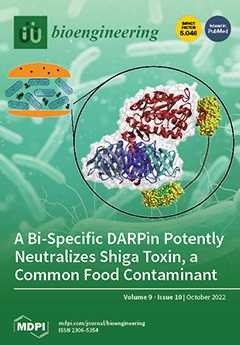The polysaccharides found in
Lentinula edodes have a variety of medicinal properties, such as anti-tumor and anti-viral effects, but their content in
L. edodes sporophores is very low. In this study, Fe
2+ was added to the liquid fermentation medium of
L
[...] Read more.
The polysaccharides found in
Lentinula edodes have a variety of medicinal properties, such as anti-tumor and anti-viral effects, but their content in
L. edodes sporophores is very low. In this study, Fe
2+ was added to the liquid fermentation medium of
L. edodes to analyze its effects on mycelial growth, polysaccharide and enzyme production, gene expression, and the activities of enzymes involved in polysaccharide biosynthesis, and in vitro antioxidation of polysaccharides. The results showed that when 200 mg/L of Fe
2+ was added, with 7 days of shaking at 150 rpm and 3 days of static culture, the biomass reached its highest value (0.28 mg/50 mL) 50 days after the addition of Fe
2+. Besides, Fe
2+ addition also enhanced intracellular polysaccharide (IPS) and exopolysaccharide (EPS) productions, the levels of which were 2.98- and 1.79-fold higher than the control. The activities of the enzymes involved in polysaccharides biosynthesis, including phosphoglucomutase (PGM), phosphoglucose isomerase (PGI), and UDPG-pyrophosphorylase (UGP) were also increased under Fe
2+ addition. Maximum PGI activity reached 1525.20 U/mg 30 days after Fe
2+ addition, whereas PGM and UGP activities reached 3607.05 U/mg and 3823.27 U/mg 60 days after Fe
2+ addition, respectively. The Pearson correlation coefficient showed a strong correlation (
p < 0.01) between IPS production and PGM and UGP activities. The corresponding coding genes of the three enzymes were also upregulated. When evaluating the in vitro antioxidant activities of polysaccharides, EPS from all Fe
2+-treated cultures exhibited significantly better capacity (
p < 0.05) for scavenging -OH radicals. The results of the two-way ANOVA indicated that the abilities of polysaccharides to scavenge O
2− radicals were significantly (
p < 0.01) affected by Fe
2+ concentration and incubation time. These results indicated that the addition of iron provided a good way to achieve desirable biomass, polysaccharide production, and the in vitro antioxidation of polysaccharides from
L. edodes.
Full article






